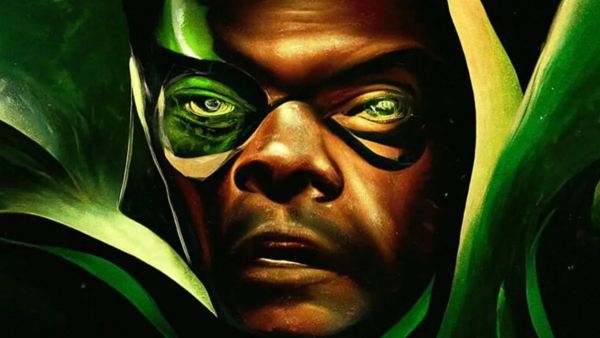Avatar: The Last Airbender – A showcase of cultures
Over these long quarantine months, myself and many of my peers have found ourselves revisiting beloved childhood TV shows and movies- likely because we are drawn to the comfort of nostalgia in a world that feels even less absolute than normal. One of my comfort shows as of late is an all time favorite of mine, Avatar: The Last Airbender (ATLA). Avatar is a childhood favorite of many Gen Z’ers and its fandom experienced a massive revival of interest after the show was added to Netflix in May.
ATLA features four nations, each able to “bend” or control a single element -either air, water, earth, or fire. It’s protagonist is Aang, a young airbender boy who was chosen as the Avatar – the only bender who can bend all four elements. Aang, along with Water Tribe siblings Sokka and Katara, travels around the world in an attempt to master all four elements to fulfil his destiny by defeating the evil firelord and bringing balance to the world.
The universe the show is set in draws inspiration from a variety of cultures: primarily east Asian, but also south Asian, and Indigenous cultures. The word “avatar” itself comes from the Sanskrit word “avatara”, meaning an incarnation of god on earth to help humankind. In Hindu mythology, avatars of gods are born on the earth to act as a balancing force to counteract the rise of evil.
Interestingly, the concept of the Avatar, and Avatar Aang specifically, bears striking resemblance to that of the Dalai Lama, the head monk of Tibetan Buddhism. The Dalai Lama is believed to be continually reincarnated, when this happens a group of monks search for him and then raise and train him specially to fulfil his duties. They test him by showing him a series of objects, some of which belonged to the previous Dalai Lama; if the child chooses those objects it is seen as a sign that the boy is a reincarnation. The Avatar undergoes this exact process. Similarly, the rest of the Air Nation is heavily modeled after Tibetian Buddhism. The Air Nomads practice meditation frequently and value peace and spirituality highly. They wear shades of orange very similar to that of certain schools of Tibetian Buddhists.
The Water Tribes are inspired by the culture of Inuit and Yupik peoples as well as other Indigenous groups. Much like the Inuit and Yupik, the people of the Water Tribe depend upon the sea for their food and their clothing resembles the anoraks and mukluks worn by Inuit peoples. The dwellings of the Southern Water Tribe, where Sokka and Katara grew up, also draw inspiration from Inuit culture. However, the architecture of the Northern Water Tribe bears a distinct resemblance to pyramid-like structures (ziggurats) built by ancient Mesoamerican civilizations. Likewise, many of the water tribe’s cultural practices, such as the ceremonial use of face painting, are similar to those practiced by many Indigenous groups in the Americas.
The Earth Kingdom, the largest of the four nations, draws its inspiration primarily from Chinese and Korean cultures. Due to its sheer size The Earth Kingdom is divided into various provinces. The kingdom is unique in that it is home to a variety of different cultures and ethnicities. Ba Seng Se, the Earth Kingdom’s capital, is heavily based off of China -specifically during the Qing Dynasty era. This is evident in the braided hairstyle worn by the men of Ba Seng Se. During the Qing dynasty, it became mandatory for men to wear their hair in a long braid with a partially shaved head. Additionally, the city’s wealthy women sport liangbatou headpieces which were popular at the time. Elsewhere in the Earth Kingdom citizens wear broadly east Asian hairstyles such as simple topknots. The architecture of Ba Seng Se makes many unmistakable references to China as well. “The Great Wall of Ba Seng Se” is a clear allusion to the Great Wall of China and the compound surrounding the city’s royal palace is the spitting image of the Forbidden City’s iconic Meridian Gate.
The outskirts of The Earth Kingdom, however, draw from other Eastern cultures such as Korea and Japan. In season 2 of ATLA, disgraced crown prince Zuko and his uncle Iroh end up in a rural agricultural village in the western Earth Kingdom. There they meet a young Earth Kingdom girl named Song and her Mother. Song and her Mother both wear the hanbok, a traditional style of Korean clothing. The architecture in their village also strongly resembles that of Korea.
Another extremity of The Earth Kingdom, Kyoshi Island, draws its inspiration from ancient Japan. Some claim that the island’s people are based off of the Ainu people, an indegenous group in Japan. Japanese influence is visible in Kyoshi Island’s architecture as well as its military force, the Kyoshi Warriors, whose function are like that of the feudal Japanese samurai. The makeup of the Kyoshi Warriors resembles both the makeup worn by Japanese hostesses called geisha, and the Kabuki masks worn in traditional Japanese theater. The Kyoshi Warriors carry a type of long Japanese sword called a katana, however their primary weapons are a pair of metal fans. These metal fans are similar to the tessen, an iron fan carried by some samurai to be used as a covert weapon.
The inspiration behind the Fire Nation comes from China, as well as southeast Asia and Japan. Fire Nation architecture is heavily influenced by Southeast Asian and Chinese cultures. Southeast Asian influence is especially evident in the houses of Ember Island. These houses are adorned with decorative edging and horn-like ornaments called chofa which are commonly found on palaces and temples (specifically wats) in countries such as Cambodia, Laos, and Thailand. The architecture of the Fire Nation capital, however, is primarily influenced by Chinese architecture; an example of which is the gold dragon motif of the Fire Lord’s throne room. Chinese influence is also apparent in the clothing of the fire nation nobles. The men wear an ornament secured around their topknots with a pin called xiao guan, which was traditionally worn by high ranking men in Chinese courts. Similarly, the military uniforms of Fire Nation soldiers bear a resemblance to armor worn by Chinese soldiers during the Tang and Ming Dynasties.
During season 3, some characters visit the ancient city of the Sun Warriors, located on a northern Fire Nation island. The sprawling city is almost an exact likeness of ancient Mesoamerican cities, complete with elaborate carvings and a towering pyramid-like structure called a ziggurat. According to the show’s writers, the designers were inspired by ancient Mayan ruins. The culture of the Sun Warriors is inspired by American Indegenous groups as well as ancient empires such as the Inca, Aztec, and Maya.
Politically and culturally, the Fire Nation bears many similarities to imperialist Japan. The increasing industrialization of the nation draws parallels to the Meiji Era in Japan as do some of the Fire Nation’s actions at the beginning of the Hundred-Year War (the war which the Fire Nation is waging against the other nations). Many of the events that happen as a result of the Hundred-Year War depict real life consequences of war. Thus, the show explores many dark and difficult themes such as genocide, loss of cultural identity, the effects of propaganda, and various negative effect of colonialism.
However, despite the Fire Lord and his court being the villains of the show, the citizens of his nation aren’t villainized. In fact, the majority of them are good people. Likewise, there are characters from the supposedly ‘good’ nations who are terrible people. Part of what makes the world of Avatar so real and captivating is that it does not shy away from complexity. The show makes an effort to display diversity even within cultural and political groups and in doing so promotes compassion.
However, I believe it is important to address that there are people of color who feel that ATLA is tokenizing. And while I don’t personally believe that it is, that opinion is valid. The creators of the show are two white men and the vast majority of the show’s voice actors are white as well. All of these people are profiting off of the rich cultural heritage of Asian and Indegenous peoples. Nevertheless, while I believe that it would have been ideal by far for ATLA to have had voice actors of color, the show did its research thoroughly and portrayed Asian cultures with depth and variety. The argument for tokenization can be made, but I feel that ATLA does a far better job than any other kids show I’ve seen at respectfully portraying other cultures. Representation, especially for Asians (and Indigenous groups, but I can’t speak for them), is very rarely done well, so to me Avatar is a gem that I will cherish forever.
The world building in Avatar: The Last Airbender is nothing short of masterful, probably because the show’s creators, Bryan Konietzko and Michael Dante DiMartino, really did their research. The world that they created connects to kids across many cultural backgrounds, and while fictional, feels very much grounded in our own. Frankly, it’s astonishing to me that two white men were able to create such a culturally diverse and relevant show. It shouldn’t surprise me, because all it takes is respect and actually consulting cultural experts, but sadly most popular media lacks both of the above. Would it have been better if there were more people of color as voice actors? Yes. And is it a tad problematic that two white men are profiting so much off of a show that owes most of its appeal to other cultures’ histories? Also yes. But when it comes down to it, Avatar: The Last Airbender helps children of color feel seen by showcasing a multitude of cultures that aren’t often portrayed well in popular media, especially children’s media. What’s more, in doing so, the show opens kids’ eyes to the beauty of different cultures.







Guadalupe Bryan • Jan 1, 2021 at 12:36 am
The best!